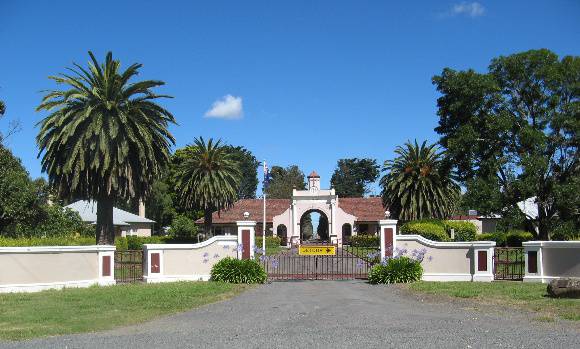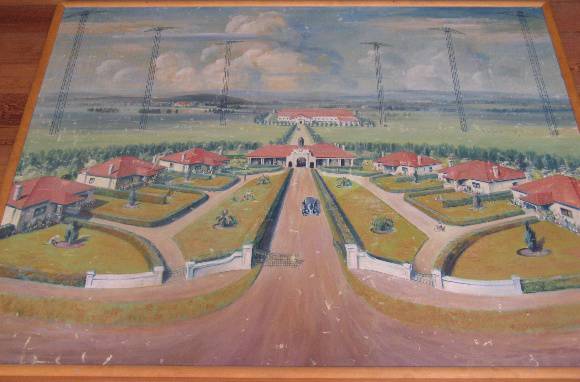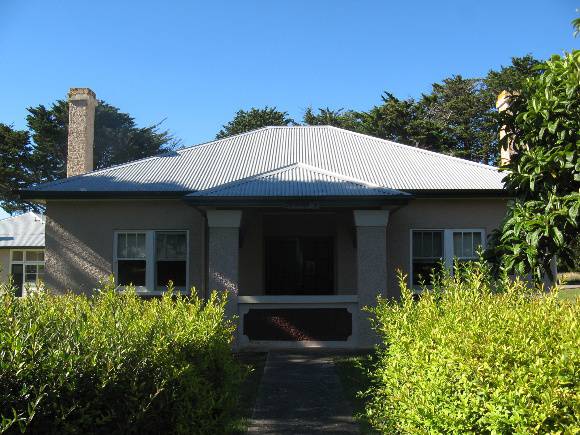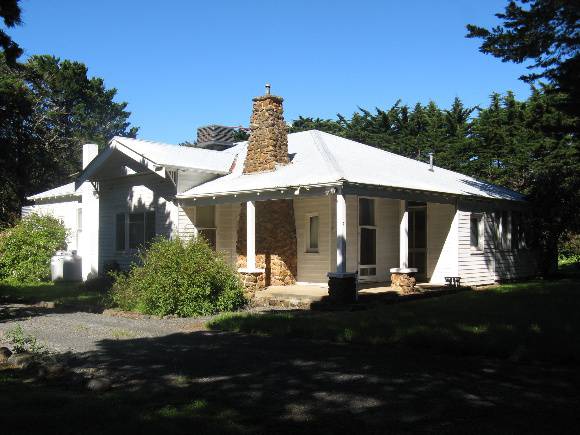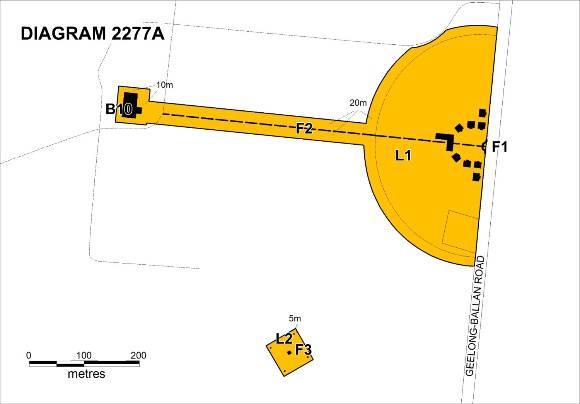| Back to search results » | Back to search page » |
|
FORMER AUSTRALIAN BEAM WIRELESS TRANSMITTING STATION
Statement of Significance
What is significant? The former Australian Beam Wireless Transmitting Station is situated on a large rural site at Fiskville, south of Ballan on the plains west of Melbourne, and includes the former powerhouse building, a staff accommodation complex and a manager's house, which were built in 1926. The complex was part of Australia's first direct international communications system, which operated in conjunction with a receiving station at Mount Cottrell, south of Melton. Fiskville was named after Ernest Fisk, the Managing Director of AWA (Amalgamated Wireless (Australia) Pty Ltd), who developed the scheme. In 1918 Fisk had demonstrated the feasibility of direct wireless communication between Australia and Britain, and with the support of Prime Minister William Hughes overcame objections to the scheme from Britain, where a relay scheme was favoured. The two stations were built by AWA for £119,000. The official opening, attended by the Prime Minster Stanley Bruce and the Governor-General, took place in Melbourne on 8 April 1927. The system linked Britain, and in 1928 North America, directly with Australia by means of a telegraph system transmitted by short-wave beam wireless. From 1930 a radio-telephone service began, and in 1934 the system also began to send and receive pictures. Both stations included workers' accommodation, so that they could be operated continuously. The buildings are thought to have been designed under the supervision of the Commonwealth Architect, J S Murdoch. There were originally three masts 75 metres high with Franklin antennas at Fiskville, with the number increasing as services expanded. These were replaced with rhombic antennas in 1950s, when the Melbourne Olympic Games dramatically increased demand. With the advent of co-axial cables in the 1950s and 1960s and satellite communication in the 1960s, demand for the beam wireless system decreased and the Fiskville and Mount Cottrell sites closed in 1969. The Fiskville site was taken over by the CFA as a residential training facility and the masts were dismantled in 1971. The former Beam Wireless Transmitting Station is located on a rural site of about 180 hectares, with an accommodation complex addressing the main road, the main radio building and a powerhouse on axis with this to the west. The workers' accommodation complex consists of eight single-storey family houses arranged symmetrically around a central drive, which leads from the entrance gates to an impressive Inter-war Spanish Mission style building with an elaborate arched portico and central carriageway, which contained bachelor accommodation and recreational facilities. The houses are all identical with hipped corrugated iron-clad roofs. They are possibly constructed of rendered reinforced concrete substrate and may be early examples of this method of construction. The houses are separated by lawns and clipped hedges, and three mature Canary Island palms (Phoenix canariensis) are located in the forecourt garden. The original impressive rose gardens have been removed. The accommodation complex is enclosed by an avenue of mature Monterey cypresses (Cupressus macrocarpa), which also line the road leading to the former powerhouse. This is a large two storey rendered building with a double gable roof and with the walls decorated with simple pilasters. To the east of the former powerhouse are the footings of at least one of the radio masts, with the four concrete pads on which the legs once rested in the centre and about 33 metres from this are the four massive concrete blocks with heavy iron rings for the attachment of the guy wires. Other buildings and CFA facilities form part of the site but are not of significance. This site is part of the traditional land of the Wathaurung people. How is it significant? The former Australian Beam Wireless Transmitting Station is of historical, architectural, and scientific (technological) significance to the state of Victoria. Why is it significant? The former Australian Beam Wireless Transmitting Station is of historical significance for its association with the first direct commercial telegraphy communication across the British Empire between Britain and Australia, bridging the longest 'wireless' span in the world. Telegraphy received via the Australian Beam Wireless enthralled the media during the 1920s and was an achievement celebrated by engineers and politicians. A large part in this scheme was played by Australia, under the leadership of Prime Minster William Hughes, and by Sir Ernest Fisk, the outstanding figure in the early history of radio in Australia, who was knighted for his achievements in 1937. The former Transmitting Station is of historical significance for its association with Amalgamated Wireless (Australia) Pty Ltd, the second largest radio company in the British Empire, which became an Australian icon through its provision of radio, and later television, equipment, and was one of Australia's largest companies. The accommodation complex is of historical significance as an outstanding example of a workers' housing estate designed to attract and retain employees, which reflects the need for the station to operate around the clock as well as the difficulties of transport in such relatively remote locations at the time. The Powerhouse building is of historical significance as its size reflects the scale of power generation required for the former wireless station. The functional layout of the Station is significant, including the separation of accommodation and recreation areas in a landscaped setting from the operations facilities, including the Powerhouse and remnant set of concrete pads for mast and guy wires. The former Beam Wireless Transmitting Station is of architectural significance for the accommodation and recreation buildings which include Spanish Mission style features. The buildings are thought to have been designed under the supervision of the Commonwealth Architect J S Murdoch, and reflect contemporary Commonwealth styles. Restrained architectural expression is also evident in the Powerhouse building. The layout of the complex reflects post-World War I concepts of a planned garden community. The former Beam Wireless Transmitting Station is of scientific (technological) significance for its association with one of the major scientific and technical feats of the inter-war period. Wireless was considered one of the wonders of the early twentieth century, and the Australian Beam Wireless station at Fiskville was an essential element of the longest distance direct radio link in the world.
Group
Postal and Telecommunications
Category
Radio Station


